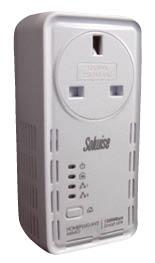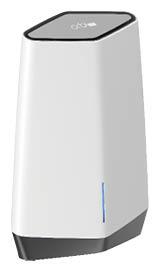25 August 2021
Mesh networks have long been synonymous with the emergency services network, hospitals, schools, public halls and the home to name a few. But how useful is it for enterprises? Robert Shepherd investigates
We all want and need a robust wireless network, regardless of the sector we work in, because it’s essential for businesses to maintain broadband connectivity and handle multiple connections reliably. That’s a no-brainer – after all, a network with high bandwidth can accommodate modern working and living, which include the streaming of vast amounts of data, voice and video that is commonplace for businesses to function in the best way possible. With that in mind, more and more enterprises are looking to wireless mesh networks because they can deliver more “dynamic connectivity” than traditional network alternatives overcoming obstacles and providing redundancy. Tell me more, you say.

Doug Cheung, Netgear
“The most useful feature of a mesh system is that it can be set up without any wires to connect the satellites”
Mesh networks might sound like a new(ish) phenomenon, because they have garnered attention in the consumer/home-working environment in the last couple of years. It makes sense when you think about how most of us are still working from home as companies up around the world, not just the UK, plan a future of remote and flexible working for reasons we really don’t need to discuss.
In mesh, all the computers are interconnected to every other on the relevant network. Each device not only sends its own signals but also relays data from other computers. The nodes are completely connected to each other, via a dedicated link during which information travels from node to node and there are N(N-1)/2 links in mesh if there are N nodes. Every node features a point-to-point connection to the opposite node. The connections within the mesh can be wired or wireless.
In fact, it may interest you to know that the concept of mesh networks dates back to the 1980s in military experiments. It then became available in high-end production hardware in the 1990s. However, a combination of cost, complexity, a scarcity of radio spectrum and other limitations in early implementations, mesh didn’t gain traction and enter the modern lexicon until the middle of the last decade – 2015 for the pendants. With its arrival came a promise to solve the problems synonymous with Wi-Fi, improving coverage, speeding up networks and putting an end to a lot of hassle.

Patrick Hirscher, Zyxel
“Purchasing a mesh system needs to be considered as an investment into the future of an enterprise”
It also promised to remove the need to place base stations meticulously around a home or small office to avoid those debilitating slow and dead spots.
With mesh, not all the access points (AP) have to plug into the wired infrastructure. Those not plugged in get their network connection wirelessly from a nearby mesh AP. Small mesh networks might require only a single mesh AP plugged into the wired network, while larger networks require multiple mesh APs to be plugged into the network to support those that are connected wirelessly.
Then there’s kinetic mesh, the industrial wireless mesh network, enables people and organisations to function where communications infrastructure has been severely damaged, completely destroyed, or to swiftly move networks to places where they didn’t exist previously. Real-time mobility across the network is achieved.
Arguably the most prominent player in the kinetic mesh space is Rajant, the US-headquartered firm born from the ashes of the 9/11 terrorist attacks. Along with supplying the services to the underground mining sector in Africa and elsewhere, in the UK, Rajant helped deliver the most suitable network to ensure the safety of those at two royal weddings, with hundreds of thousands of people flooding to Windsor to celebrate the landmark occasions. The two royal weddings were Prince Harry to Meghan Markle and Princess Eugenie to Jack Brooksbank. “The Thames Valley Police needed to effortlessly provide supplementary CCTV coverage with unfailing resilience and range,” says Chris Mason, vice president of sales – EMEA for Rajant. “We had less than a week to create a full-coverage network of specific areas before the wedding ceremony of Prince Harry and Megan Markle. Rajant’s rapidly deployed and secure network provided the robust CCTV network the police required to keep everyone safe at all times during the ceremony.”
Mason explains how the kinetic mesh integrated with existing communications infrastructure, ensured real-time mission-critical video and data was provided for enhanced visibility.

Chris Mason, Rajant
“We had less than a week to create a full-coverage network of specific areas before the wedding ceremony of Prince Harry and Megan Markle”
“Utilising multiple high-bandwidth frequencies, the kinetic mesh ensured wireless output from broadcasters and the general public did not prevent transmission of any important imagery,” he continues. “The imagery was several seconds ahead of the television broadcasters covering the event, ensuring that Thames Valley Police remained in control. Thames Valley Police also worked alongside Rajant to support security efforts at the Royal Ascot race meeting, with approximately 300,000 people in attendance.”
The use cases at the highest level are clear to see, but mesh networks can also be fit for enterprises that need connectivity in settings where it’s hard to run cable, outdoor areas, and rented spaces or temporary locations. What’s more, Patrick Hirscher, EMEA wireless market development manager at Zyxel, the manufacturer of network devices, says “UK enterprises are finding themselves drawn to mesh systems” for the same reason that they’ve been so popular domestically. “They’re incredibly effective at removing Wi-Fi ‘dead zones’, are super simple to set up and importantly won’t sacrifice connection speeds as you add more nodes to grow your network,” he says. “Better still, you can happily move around the business and your device will automatically connect to whichever node produces the strongest signal, saving you the hassle of logging in to different networks.”

However, Steve Mace, technical director at Solwise, the antenna manufacturer for mobile broadband and WLAN, argues that mesh is slower than the alternative of good APs cabled back. “Further mesh gets rapidly slower as you add more APs,” he says. “Cabled APs runs at full speed all the time. I can’t see why a business installation would consider mesh.
Also, it depends on the application, in a wide-open space such as a warehouse or machine workshop, it would work fine, but in an office with lots of bodies and objects to disrupt the wireless, not a great option.
Doug Cheung, senior product line manager at Netgear business wireless, says that typically, a mesh system is most useful in a small professional office with less than 25 employees. “A mesh system, such as the Orbi Pro, can support up to six satellites,” he adds. “Each satellite, such as the satellite for SXK80, can cover areas of approximately 3,000 sq ft (300sq metres). Adding the router (or the base), the Mesh System can cover a rather large area.
The most useful feature of a mesh system is that it can be set up without any wires to connect the satellites. This is both convenient, and flexible for deployment.
On top of that, Orbi Pro has security features that greatly improves the network security for the business.”
One accusation levelled at the mesh crowd or advocates is that it’s not easy to upgrade the hardware in the system. Hirscher says things have changed.
“When mesh first hit the market in 2015, hardware upgrades could be a tedious seven-step process, as IT professionals manually downloaded the updates for their mesh routers,” Hirscher adds. “However, over the past few years, vendors have worked hard to reduce the length of the upgrade process. Now, with the use of cloud management solutions, such as Zyxel’s Nebula, business users can monitor and update their mesh systems via their smartphone or tablet.”
Cheung goes a step further and argues that systems are actually designed to be extremely convenient to set up. “The base unit and the satellite are pre-paired if purchased in a bundle,” he says. “The trade-off is that the satellites are not designed to be compatible with a different mesh system model. For example, the satellite for SXK30 is not compatible with the router of SRK60 or SXK80.”
Nevertheless, Mason argues that UK enterprises need to exploit technologies within the Industrial Internet of Things (IIoT) sector, blockchain solutions and big data to ensure they remain ahead of the curve in an increasingly connected age.
“Mobile communication technologies can keep up with the demand and continue to deliver for their customers in an ever more automated age,” he says. “Aging and legacy technology will struggle to meet the growing needs of an organization looking to enable autonomous operations.”
Furthermore, Mason says that “replacing the existing connectivity infrastructure with a more modernised system”, can, in turn, involve costly and time-consuming installations. “This may disrupt day-to-day operations and affect overall productivity,” he continues. “An out-of-date system may lack network security capabilities, potentially exposing them to risks and vulnerability. A wired infrastructure may limit its reach and significantly hold back businesses from reaching their full potential.”
That’s not to say there aren’t any other Wi-Fi-aiding technologies on the market. Scour the internet and you’ll find companies pushing powerline extenders, boosters, repeaters and other bits of kit all threatening to do the same thing – put an end to blackspots and dead zones. What’s more, these technologies are a lot easier on the pocket. With that in mind, why choose mesh?
One argument is that powerline systems will only work well in buildings with clean and quiet mains wiring, which is never a guarantee. Boosters aren’t likely to offer seamless roaming and take longer to configure than mesh systems.
Cheung points to the fact that extenders and repeaters are layer two devices, which means they do not perform an internet routing function. “Secondly, they are one-to-one mapping, meaning, you have one powerline socket going to the wall, and one ethernet port that goes to one ethernet device,” he says. “It is vastly different from a Wi-Fi mesh system, which serves a large number of end-point devices. A repeater is one single device that extends the Wi-Fi signal from the base unit. It does not have the ability to form a multi-unit mesh network.”

That said, Mace adds a repeater network could also suffer the same performance drops as mesh; “at the end of the day” mesh is simply a repeating Wi-Fi network where the nodes decide the best routes for the traffic. “In a standard repeater network you fix the repeating in the setup,” Mace continues. “However, with mesh systems, they all seem to restrict usage to the lower, non-dfs, 5GHz channels. This is because the mesh units can’t cope if nodes suddenly change channel. If you use fixed repeaters then the option is there to use the extended channels which means less interference and wider bands so better performance. The one advantage of mesh is ‘no brain’ setup.”
Mason argues that while powerline adapters can extend wired connectivity to all parts of the building using existing electrical circuitry, “in contrast”, a wireless mesh network can provide the scalability, reliability and robustness needed to provide unfailing connectivity for a business’ operations to run seamlessly.
“Wireless repeaters re-broadcast an existing wireless signal, but with a mesh network, the operator can keep all devices on a network directly connected without using a central router or switch,” he adds. “UK enterprises may have assets including vehicles and staff constantly on the move across their sites. In that case, it may provide the capability to support numerous mobile devices at once, but this solution is most suited for indoor environments where assets are stationary. Suppose powerline extenders or wireless repeaters are utilised. Operators subsequently have to add multiple access points to keep sprawling outdoor operations covered. The network may not be able to work around interference, which means coverage drops are commonplace.”
As the merits of a mesh system become clearer, many enterprises have been deterred by the cost synonymous with it, because, by all accounts, it’s not cheap.
“Purchasing a mesh system needs to be considered as an investment into the future of an enterprise,” says Hirscher. “While the initial cost of mesh may be on the slightly higher side, once enterprises have invested in the system, their yearly cost of managing and upgrading is significantly lower compared to other wireless access solutions. The benefit of today’s mesh systems is that they can be managed directly from a cloud system which, for vendors such as Zyxel, is free for the user. Every firmware upgrade and support service is completely free, and so once that initial cost has been absorbed, mesh becomes one of the most cost-effective infrastructure decisions that an enterprise can make.”
Mace says there are possibly two reasons why mesh is expensive to run. “A mesh AP has to work harder routing the traffic so, perhaps, a mesh product has a faster process/ram so, perhaps, that means more money,” he adds. “I would also think that mesh products have more margin for the manufacturer. Mace also argues that reliable mesh networks need the equipment to be capable of high-speed connections.

Steve Mace, Solwise
“I would also think that mesh products have more margin for the manufacturer. You are paying for convenience of not laying cables over a wide area, and in theory a seamless wireless hand-off of clients between nodes.”
However, Cheung argues that it’s “not particularly expensive” if one considers the features included in the deal. “Take SXK80 as an example, it has tri-band, in each band, there are 4-streams of Wi-Fi (4x4 transmit x receive),” he says. “Altogether, there are 12 streams of Wi-Fi radio delivering 6Gbps aggregate throughput. On the wired interfaces, there is a 2.5Gbps ethernet port, and 4 gigabit ethernet ports in each of the router and satellite units. On top of that, there is a power CPU and memory system to run the mesh system, internet access, and headroom for additional services.”
So, what’s the verdict?
Hirscher says the scalability factor is particularly important to businesses, as SMBs across the UK increasingly adjust their strategic approach from recovery to growth mode. “For these businesses, mesh systems present a quick and easy solution that is entirely capable of keeping up with their growing headcount and meet the demands of their expanding offices.”
The jury is out, but the general consensus is mesh is easier to install and configure than other forms of network infrastructure. They can be particularly useful in enterprises operating on large-scale premises where seamless roaming is useful and important.
As for the cost? It costs money because it saves money.










